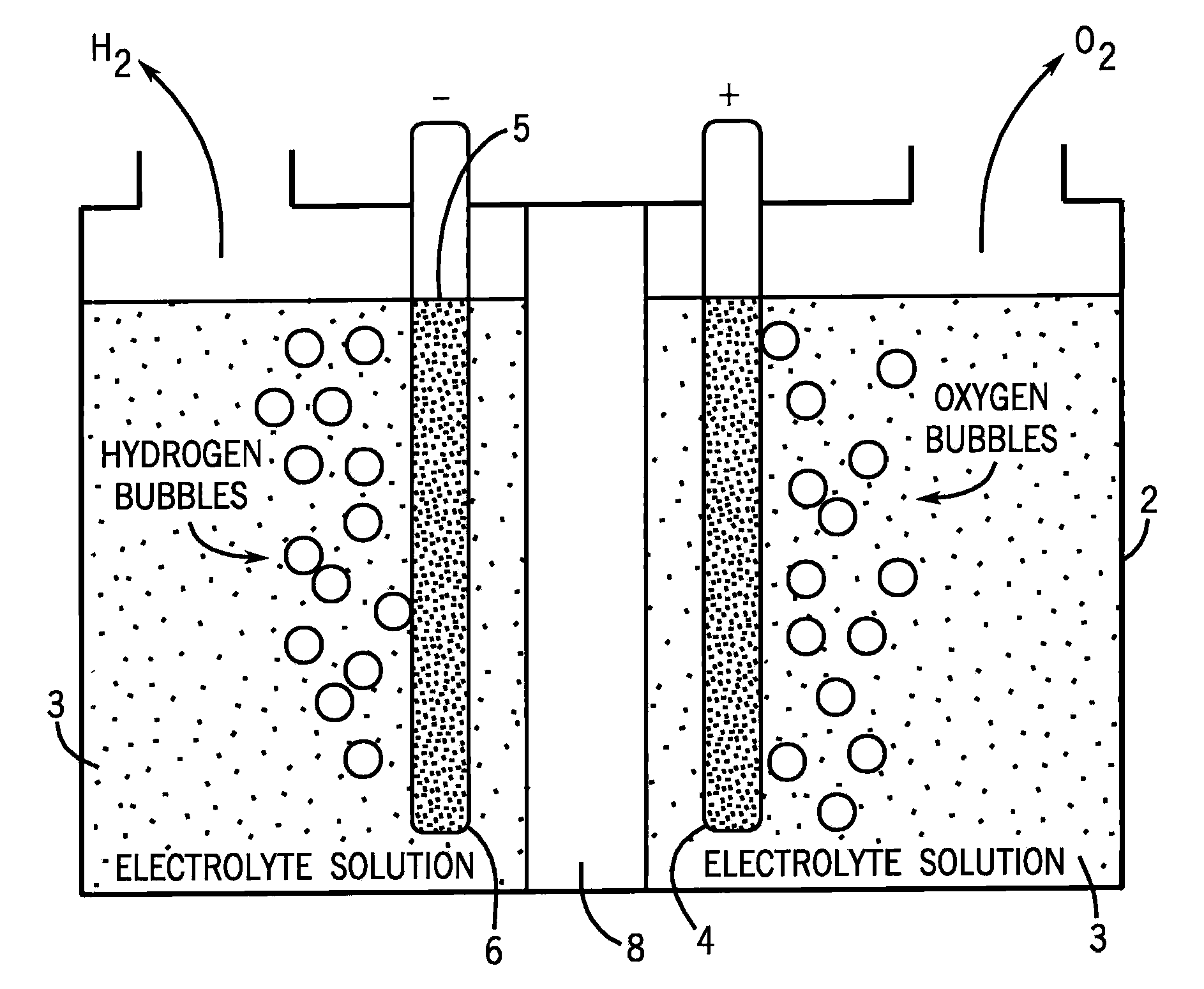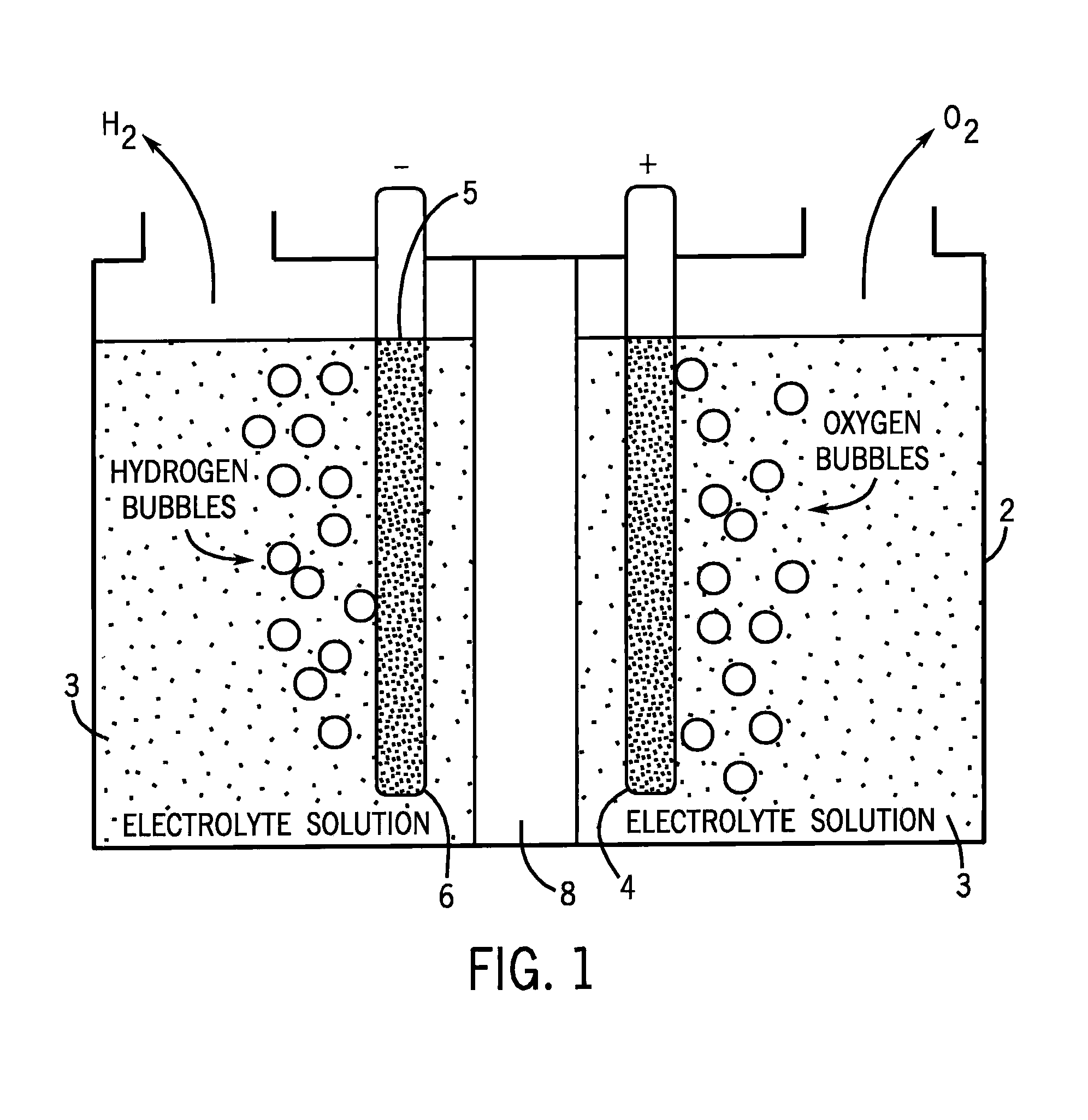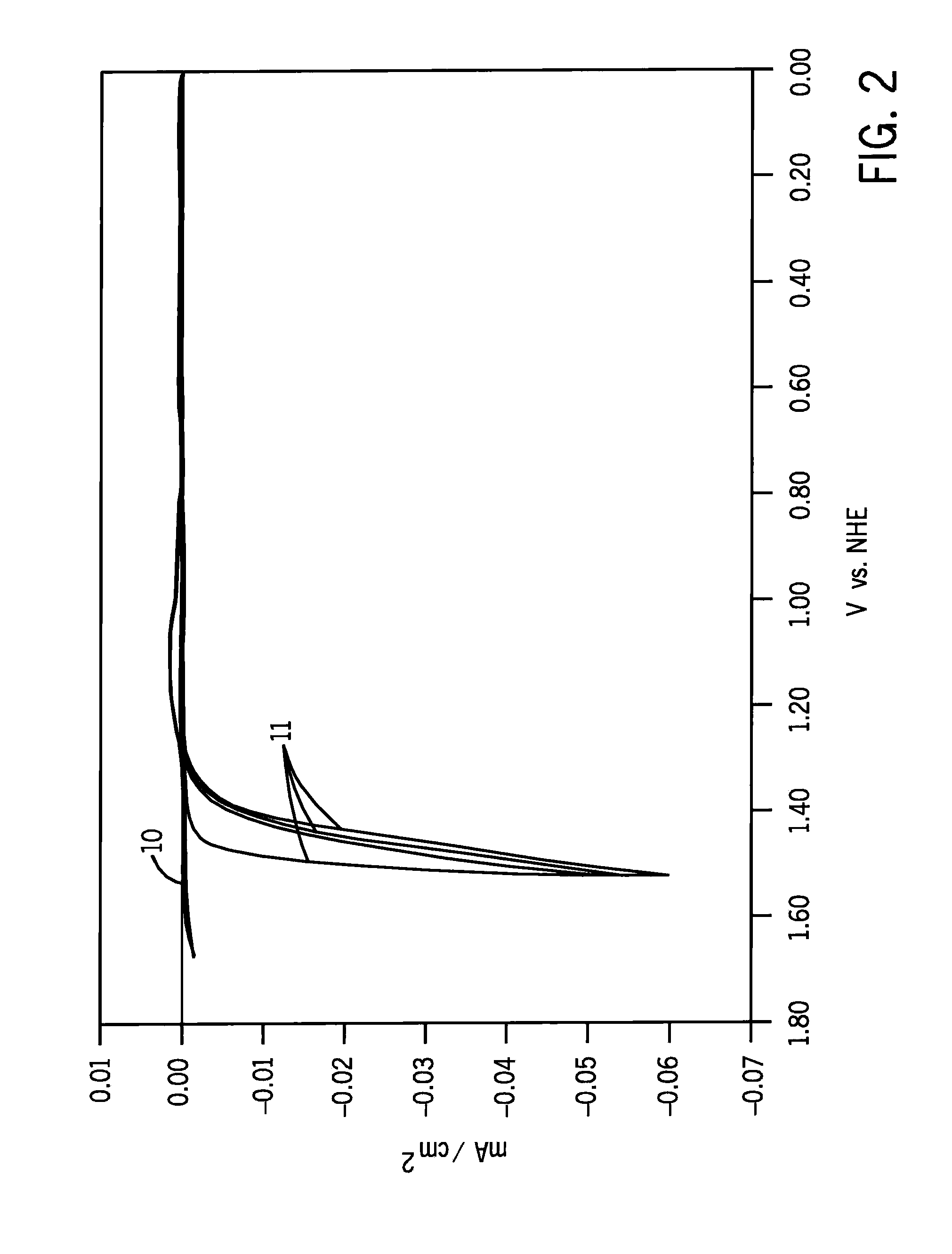Cobalt oxyfluoride catalysts for electrolytic dissociation of water
a technology of electrolysis and catalysts, applied in the field of catalysts, can solve the problems of significant commercial impediments to implementing their use, process commercially impractical, energy inefficient manner, etc., and achieve the effects of low overpotential, low cost, and high quantity
- Summary
- Abstract
- Description
- Claims
- Application Information
AI Technical Summary
Benefits of technology
Problems solved by technology
Method used
Image
Examples
Embodiment Construction
[0031]To create our electrolyte solution we add to water cobalt++ cation at around 1 mM, such as by adding CoSO4, CoCl2, Co(NO3)2 or the like. We also add a fluoride anion at a concentration of about 0.1 M. We prefer providing the fluoride anion in the form of a pH buffered mixture of KF and HF. In our experiments with varied pHs the pH was adjusted by the addition of KHF2 or NaOH as needed.
[0032]The cathode (6) can be any cathode suitable for use in water electrolysis under the conditions we are exposing the cathode to. Particularly preferred cathodes are platinum or platinized graphite cathodes.
[0033]The anode (4) begins with a substrate (5), which again can be any anode suitable for use in water electrolysis under the conditions we are exposing the anode to. Particularly preferred substrates for the anode are materials such as tin oxides, particularly indium tin oxide or fluorine tin oxide.
[0034]We cause electrolytic film deposition of our catalyst by operating the FIG. 1 device ...
PUM
| Property | Measurement | Unit |
|---|---|---|
| pH | aaaaa | aaaaa |
| pH | aaaaa | aaaaa |
| concentration | aaaaa | aaaaa |
Abstract
Description
Claims
Application Information
 Login to View More
Login to View More - R&D
- Intellectual Property
- Life Sciences
- Materials
- Tech Scout
- Unparalleled Data Quality
- Higher Quality Content
- 60% Fewer Hallucinations
Browse by: Latest US Patents, China's latest patents, Technical Efficacy Thesaurus, Application Domain, Technology Topic, Popular Technical Reports.
© 2025 PatSnap. All rights reserved.Legal|Privacy policy|Modern Slavery Act Transparency Statement|Sitemap|About US| Contact US: help@patsnap.com



